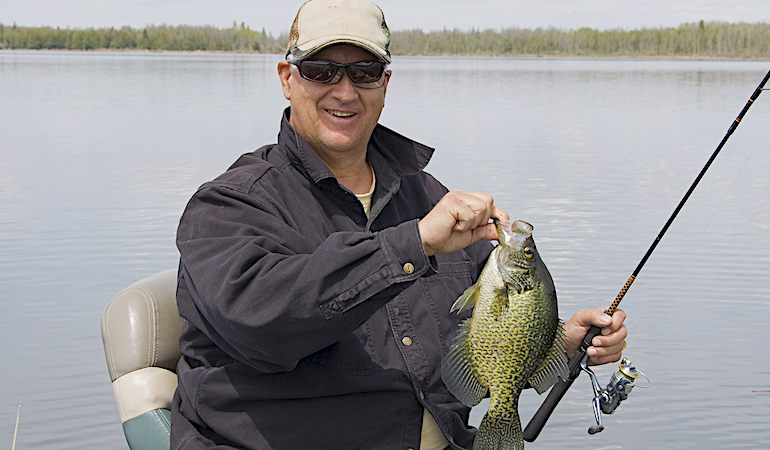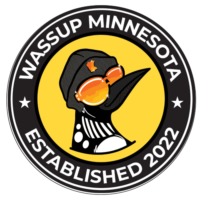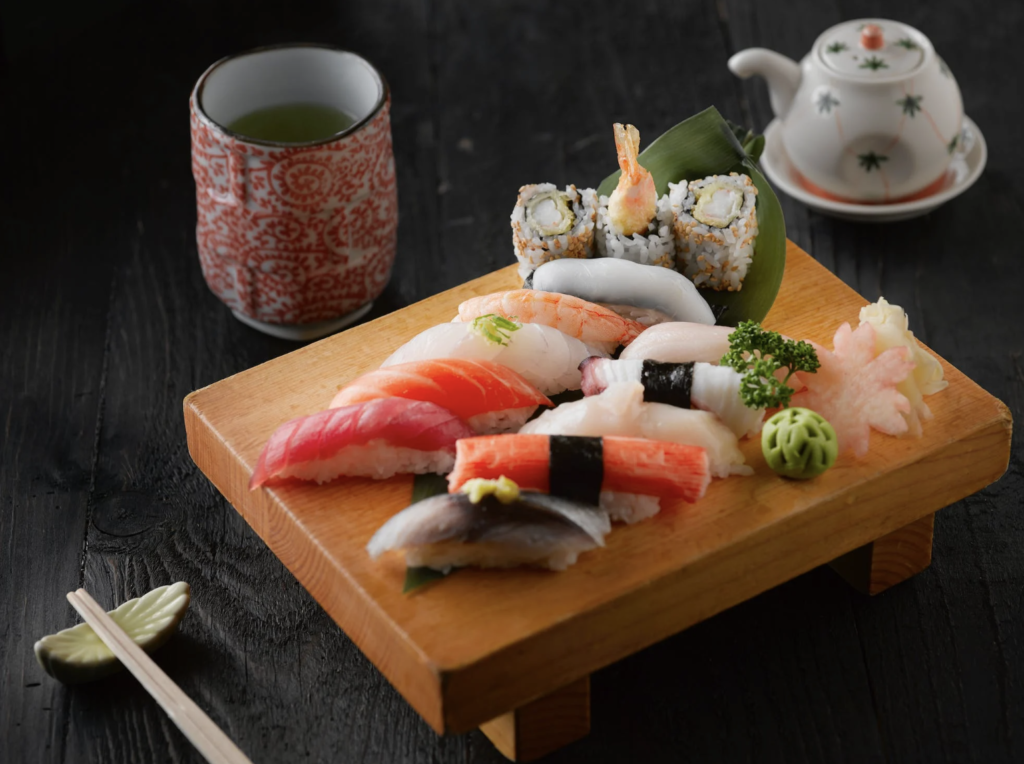Best Crappie Lakes In Minnesota,
There are a lot of fish in Red Lake, which is one of the biggest lakes in Minnesota. Come with us as we visit some of Minnesota's best crappie lakes, where you'll surely have a great time fishing.
Best Crappie Lakes In Minnesota,

These lakes in Minnesota are great for people who love to fish. Regarding crappie lakes, the best ones have both beautiful scenery and lots of fish. From the huge Sand Lake in Cass County to the quiet, private Lake Andrew in Douglas County, each lake has features that make it an excellent place for crappies to live. There are a lot of fish in Red Lake, which is one of the biggest lakes in Minnesota. Come with us as we visit some of Minnesota’s best crappie lakes, where you’ll surely have a great time fishing.
Best Crappie Lakes In Minnesota,
Sand Lake
People think that Sand Lake, which is in Cass County and covers 4,328 acres, is the best crappie lake in Minnesota. It is also the best lake in the state for crappie fishing. It flows into the Big Fork River and is an integral part of the bowstring chain of lakes, including Boston Lake, Little Boston Lake, Bird’s Eye Lake, Portage Lake, Dora, Lake Forest Lake, Sand Lake, and Sand Lake. A beautiful forest background, calm waters, and protected bays all add to the beauty of the lake, which brings out these qualities even more.
There are also underwater buildings, a range of water temperatures, and connections to lakes and rivers nearby, all of which help the crappie population grow. From crappie to bass to northern pike to giant perch and panfish, the Minnesota Department of Natural Resources puts different kinds of fish into the lake to keep the environment healthy.
Lake Andrew
Lake Andrew, which is 1918 acres and is in Douglas County, is a great place to go fishing and for fun things like swimming. The beauty of the lake comes from its many different features. For example, half of its shoreline is surrounded by wild areas that make for beautiful views. The other half shows off attractions and resorts, giving tourists a well-rounded experience. The remote forest is a good place for crappies to live, which helps the population grow in Lake Andrew. The lake is home to many types of fish, such as black crappie, northern pike, panfish, perch, and walleye, making this a great place for anglers. With an average depth of 39 feet, a maximum depth of 83 feet, and a shoreline that goes on for 5.46 miles, Lake Andrew has a lot of fishing options. Since the lake is fed by springs, it gets water from below and above the ground. This makes sure that the water source is always steady and reliable.
Red Lake
It covers an impressive 107,800 acres and is in Beltrami County. Red Lake is one of Minnesota’s biggest lakes. The lake is famous for having a lot of crappie. It’s also a popular place to go ice fishing, so resorts have been built along its edges with ice houses for visiting anglers. These places provide many services, such as open launch trips, fishing guides, RV rentals, and open campsites all year. Red Lake used to have a big walleye population, but that number dropped off in the 1990s. As time went on, the walleyes’ absence was slowly filled by a growing community of crappies. In reaction, the Minnesota Department of Natural Resources started a program to bring back walleyes, introducing millions of them over seven years. Red Lake now has many different kinds of fish, such as largemouth bass, bluegill, lake sturgeon, and more. Throughout the year, the lake is always open for fishing and exploring.
Steiger Lake
In Carver County, Steiger Lake is a small but beautiful body of water surrounded by Three Rivers Park, especially the Carver Park Reserve. There are 165 acres of land around Steiger Lake; the deepest point is 37 feet. The lake’s 2.3-mile shoreline has a boat ramp for easy entry. The deep, clear water of the lake is perfect for crappies, which helps the population increase. In 1988, the Minnesota Department of Natural Resources made keeping Northern pike and largemouth bass in Steiger Lake illegal after you catch them. Because of this conservation effort, there are now many of these two species, which generally makes fishing better. Some fish that anglers might catch are black crappie, yellow bullheads, bluegill, powerful yellow perch, black bullheads, pumpkin seeds, and even muskies. With its beautiful scenery and wide range of water life, Steiger Lake is a great place for fishermen who want to relax and enjoy the sport.
Spider Lake
Spider Lake, which is in Itasca County, is a beautiful place to go fishing. Its many species and natural beauty make it a popular spot. To live up to its name, Spider Lake spreads like a spider’s legs, adding to its unique beauty. The lake covers 1392 acres and has a maximum depth of 36 feet. It has a lot of different fishing spots, especially since about half of its surface is less than 15 feet deep. Spider Lake’s coast is about four miles long and has a lot of beautiful scenery. It has protected bays, secluded inlets, and long stretches of untouched birch and pine trees. Because of these things, Spider Lake has a lot of crappie, which makes it an excellent place for hunters looking for this valuable fish. Many other species, such as bluegill, walleye, Northern Pike, muskie, perch, smallmouth bass, and largemouth bass, live in the lake’s rich watery environment. Spider Lake is a great place to go fishing and enjoy the beauty of nature at the same time.
Rainy Lake
The US and Canada share a beautiful lake called Rainy Lake, which is 50 miles long and runs through the Rainy River District and Koochiching County. It’s 260 square miles big, and 35 miles of it are the international line. It has rough shores, more than 500 islands, and many crappie habitats. It flows into Lake of the Woods, and its islands and lush greenery make it an excellent place for crappie to hide. The area is famous for hunting, fishing, and canoeing, and it has resorts, guided trips, and boat rentals. In the middle of Indian communities, Rainy Lake is a beautiful place to escape. This borderland paradise is an excellent place for fishing because it has a lot of crappie, walleye, smallmouth bass, and Northern pike.
Bowstring Lake
Bowstring Lake is an important part of the Bowstring Chain of Lakes and is located in Itasca County. It covers 9,500 acres and has four public access places for eager anglers. The lake is in the Chippewa National Forest, and its long shoreline makes for a peaceful background. Campgrounds, cabins, and lots of open space for various activities also exist. Bowstring Lake is famous for its dark blue water, which is perfect for walleye, which do well in this unique setting. Crappies can also live in the lake because of the way the water is structured, which makes them a minor but essential species. Northern pike, panfish, perch, and bass are just some of the fish that anglers can catch in Bowstring Lake. Bowstring Lake is a great place for outdoor enthusiasts who want to relax and have fun fishing because it has a beautiful setting and many fishing possibilities.
Cut Foot Sioux Lake
Cut Foot Sioux Lake in Itasca County is a favorite place to fish for muskies, walleye, and crappie. An important historical event happened in 1750 AD when Ojibwa Soldiers saw a Sioux warrior who had lost limbs badly to frostbite. This is where the name comes from. The large natural lake with a surface area of 2,768 acres gets its water from Lake Winnie, which is connected to Lake Winnibigoshish. The highest depth is 78 feet, and the water is clear up to 9 feet deep.This makes Cut Foot Sioux Lake the perfect place to live for fishing enthusiasts. Crappies, bluegill, bass, sunfish, giant perch, muskies, and northern pike are all common fish in the lake, though walleyes are the most frequently found. Recognized among the best crappie lakes in Minnesota, Cut Foot Sioux Lake serves as a beloved refuge for fishermen seeking a varied and satisfying fishing experience. With its rich history and abundant aquatic life, the lake stands as a testament to the allure of Minnesota’s premier crappie fishing destinations.
Table of Contents
MN News Letter!
Sign up to our newsletter for the best Minnesota content sent directly to your inbox! 😎
White Bear Lake
White Bear Lake in Ramsey County is a great place to fish all year, even in winter. Walleyes, which the Minnesota Department of Natural Resources mostly stocked, are the main fish in the lake and bring in hunters all year. People who like to fish in the ice go after northern pike, walleye, and panfish. Northern pike are usually smaller, measuring 18 to 22 inches. People fish for crappies, bass, walleyes, bluegills, and yellow perch all year long.
The lake is 2,427 acres big and has 14 miles of shoreline. On average, it is 20 feet deep and 83 feet deep at its deepest point. You can fish from the shore or a boat, and the lake’s varied habitat, such as the cover along the shore and the different depths, makes it an excellent place for crappies to live. Even though exotic species like Eurasian watermilfoil and zebra mussels can be a problem, White Bear Lake is still a popular and easy-to-reach place to fish.
Annie Battle Lake
Annie Battle Lake is in Otter Tail County and is in Glendalough State Park. It covers 354 acres and is a peaceful place to fish that is open all year. Because the lake is only 51 feet deep and has a coast that goes on for 2.8 miles, fishing there is quiet and private. The crappie population is rising because the lake is far away, has many plants, and has different depths. Fishermen can catch many kinds of fish, like walleye, yellow perch, northern pike, muskie, largemouth bass, and many more. Even though there isn’t a boat ramp, canoeing and kayaking are great ways to get around the lake.
In addition to being one of the best crappie lakes in Minnesota, Annie Battle Lake offers more than just exceptional fishing. With numerous climbing trails, it becomes an excellent destination for outdoor enthusiasts. The lake caters to a diverse range of preferences with both canoe-in and cart-in campsites, making it an appealing natural haven with various options for those who appreciate the beauty of the best crappie lakes in Minnesota while enjoying outdoor activities beyond fishing.
Cedar Lake
The beautiful 700-acre Cedar Lake is in Morrison County. It has a 3-mile length and a depth of 88 feet, making it a safe place to swim. The lake is known for its large population of black and white crappies. It is also home to Yellow Perch, Northern Pike, Rock Bass, Bluegill, Cisco, and Walleye, among other fish species. The large number of crappie is due to the lake’s vegetation cover and its link to Lake of Isles and Brownies Lake, which are nearby. Cedar Lake is a great place to fish and have fun, with a cross-country ski track, fishing pier, biking path, walking path, grill, and a paid parking lot.
The Minnesota Department of Natural Resources designates Cedar Lake as one of the best crappie lakes in Minnesota, earning it the recognition as a Sentinel Lake. This special designation signifies that its ecosystem is closely monitored, underscoring the lake’s importance to the overall ecological balance in the area. As one of the best crappie lakes in Minnesota, Cedar Lake not only offers excellent crappie fishing but also plays a crucial role in maintaining the health and vitality of the local ecosystem, making it a valuable asset for both anglers and environmental stewards alike.
Lac Qui Parle
The Minnesota River was dammed in 1939, which is how Lac Qui Parle, a 6,000-acre lake in Lac Qui Parle County, came to be. The lake is famous for being a great place to fish and hunt birds. Among the waterfowl that live there are Canadian Geese. Lac Qui Parle has a diverse and healthy aquatic environment and is up to 15 feet deep. People who fish can catch crappies, walleyes, bluegills, smallmouth bass, lake sturgeon, northern pike, and channel catfish. Black and white crappies that weigh about half a pound are common. The lake is good for crappies because it has a lot of food and plants that provide structure cover. There is a boat ramp on Lac Qui Parle, and on its southern end, you can get into Lac Qui Parle State Park. This makes for a well-rounded outdoor experience.
Lake Vermilion
Anyone who likes to fish will love Lake Vermilion in Saint Louis County, Minnesota. It is famous for its stunning beauty and perfect location. The lake, which is 40,000 acres and has more than 365 islands and a shoreline that goes on for 1,200 miles, is sure to give you a memorable outdoor experience. It has a maximum depth of 76 feet and a lot of different terrains. A lot of the islands provide excellent cover for crappies, so anglers are sure to have a lot of success. The lake is home to many kinds of fish, including black crappies, bluegill, brown bullhead, bass, pumpkinseed, white sucker, and golden shiner. From the middle of November to April or May, Lake Vermilion freezes over and becomes a beautiful place to spend the winter. You can go to Lake Vermilion all year long. The Superior National Forest surrounds the lake, making it a year-round paradise for outdoor enthusiasts. The forest offers a wide range of housing and camping options and many fishing possibilities.
Artichoke Lake
Artichoke Lake is in Bigstone and Swift Counties. It is about 2,000 acres big and has a maximum depth of 15 feet. There are islands, bays, flats, and narrows all around the lake. The lake has many kinds of fish, such as black crappies, northern pike, common carp, yellow perch, black bullheads, walleye, and fathead minnows, so there are many ways to fish there. The Minnesota Department of Natural Resources calls Artichoke Lake a “sentinel lake” because it has a high phosphorus concentration. The plants around the lake give it its unique qualities. The high phosphorus levels have slowed the growth of aquatic plants and the number of migrating waterfowl that visit. However, the lake’s environment does very well by giving crappies plenty of food and cover. Even though Artichoke Lake needs to be considered for the environment, it is still a great place for fishermen who want various exciting fishing experiences.
Leech Lake
Leech Lake in Cass County is one of our list of the best crappie lakes in Minnesota. It’s a great place for black crappie fans. Leech Lake is 102,000 acres big, has a maximum depth of 156 feet, and a long, 195-mile shoreline with 11 islands. It is a great place to fish and do many other fun things. With its sports courses, swimming areas, restaurants, and easy access to wild areas, the lake offers a complete outdoor experience. The crappie population is doing very well because Leech Lake has good conditions, like depth and lots of food and water. Besides crappies, fishermen can catch many other fish, such as bluegill, catfish, northern pike, smallmouth bass, walleye, white sucker, yellow bullhead, muskellunge, rock bass, and more. There are fish between 30 and 50 pounds in Leech Lake, making it a great place for anglers looking for a wide range of exciting fishing experiences.
Conclusion
The different best crappie lakes in Minnesota give fishermen a wide range of landscapes and fishing adventures. From the interconnected waterways of Sand Lake to the peaceful wilderness around Lake Andrew, each place offers outdoor lovers a different setting. Red Lake’s attempts to recover and restock show these ecosystems’ importance. The remote beauty of Spider Lake and Cut Foot Sioux Lake’s historical importance add to the fishing experience. Minnesota’s crappie fishing scene shows how dedicated the state is to protecting its natural wonders. You can cast your line in pristine nature or enjoy the conveniences of more giant lakes like Leech Lake.


